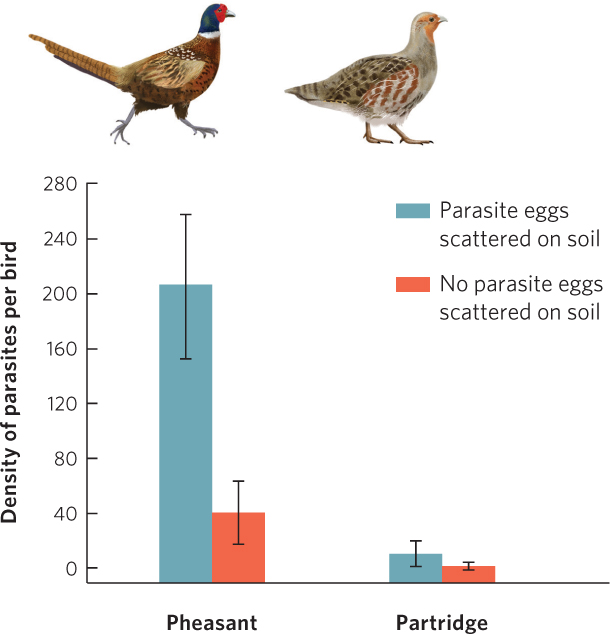
Figure 16.17 Apparent competition in pheasants and partridges. Pheasants (left) and partridges (right) were held in pens with no parasite eggs, or with parasitic eggs of nematodes scattered across the soil. In the absence of parasite eggs, some birds exhibited a low level of background infection. In the presence of parasite eggs, pheasants had a much higher number of parasites in their bodies after 50 days. Pheasants are not harmed by the parasites, but they serve as a major reservoir of new parasite eggs, which they excrete onto the soil. Partridges, which experience harmful effects from the parasite, had a low number of parasites and therefore excreted few parasite eggs into the environment. The presence of pheasants causes apparent competition because they release large numbers of parasite eggs, which leads to a decline in the partridges. Error bars are standard errors.
Data from D. M. Tompkins et al., The role of shared parasites in the exclusion of wildlife hosts: Heterakis gallinarum in the ring-necked pheasant and the grey partridge, Journal of Animal Ecology 69 (2000): 829–840.